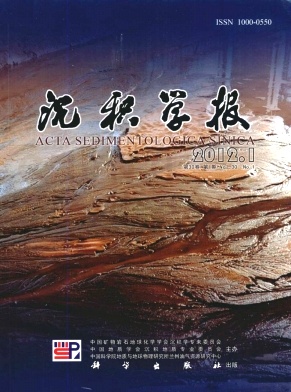Characteristics of Quartz Sandstones and Its Reservoir Significance of Xujiahe Formation in Yuanba Area, Northeastern Sichuan Basin
- Publish Date: 2012-02-10
-
Key words:
- Sichuan Basin
Abstract: In recent years, much more tightgas of the late Triassic Xujiahe Formation are discovered in Yuanba which is located in the northeastern Sichuan foreland basin in China, Sichuan Basin is about 1.9×106 km2 that evolved into foreland basin from Paleozoic platform in late Triassic. The basin is surrounded by the Longmen thrust belt(west), Jiangnan uplift(east),MichangDaba thrust belt(north) and Kangdian uplift(south). The provenance of Yuanba sedimentary rock come from Michang thrust belt, and the main sedimentary types are nonmarine braided delta and shallow lake Facies in Xujiahe Formation that can be divided into 5 rock section, Tx1, Tx3, Tx5 is shallow lake mudsiltstone and lateral continues, Tx2,Tx4 are sandstones deposited by braided river delta. Braided channels sandstones are developed extremely and overlap each other in vertical and continuous distribution. These characters are similar to the other areas of Sichuan basin. But quartz sandstones are found first in the upper Triassic Xujiahe Formation in Sichuan basin. Quartz sandstones are distributed at the bottom of Tx1 and interlayer Tx2 of Xujiahe in Yuanba, these quartz sandstones occurrence is particular that occur in unconformable surface of Tx1 and on the top of two layers lithic arenites of Tx2 that are composed of three rock section(Tx12 sandstone, Tx12 mudsiltstone and Tx32 sandstone). Results of our study point out that quartz sandstones are different depositional environment from lithic sandstones below which belong to deltaic deposits widely in highstand and early regressive systems tracts, whereas quartz sandstones are deposited in beach or tidal environment when the sea level rise rapidly, our analysis shows that quartz sandstones beach are long and narrow parallel to shoreline, and may be controlled by Michang Mount foredeep belt, but lithic sandstones braided delta below extend from north to south perpendicular to shoreline. Quartz arenites are easily recognized with lower GR log than other sandstones, and mainly very fine sands(Tx1) to fine sands(Tx2) with little clay or matrix grains, and have mature compositional and textural maturity. Quartz sandstones thickness is about 10 to 15 m in the study area. Because of strong digenesis process(Mesogenesis to Telogenesis), Xujiahe sandstones are tightgas reservoir with porosity ranging from 5.0%~11.0% and average permeability 1.9×10-3μm2. According to much more casting thinsection, the primary pores little occur in all kinds of sandstones. The secondary pores are major pore types that come from dissolution of minerals and fragments. Generally there are a few quartz sandstones reservoirs developed in Xujiahe Fm. but they have better reservoir conditions in Yuanba area because high density protogenetic fissure are developed in quartz grains of quartz sandstones, and these protogenetic fissure may be closed in diagenetic processes after deposition. When tectonic extrusion stress occur, new much fissures are produced and old reopened in quartz sandstones because quartz sandstones with cracks are easily broken, and immensely increase cracks density. Meanwhile, these fissures also induce a lot of dissolution process that improve porosity and connectivity of quartz sandstones reservoirs. According to casting thinsections, the main pore types of quartz sandstones are fissures that include long newborn cracks and short protogenetic cracks, and the secondly pore types are corrosion pores that distributed along fractures. Our analysis shows quartz sandstones as reservoirs related to provenance come from Michang thrust belt, quartz grains with cracks are not only in quartz sandstones, but also other kinds of sandstones for example lithic sandstones have quartz mineral with cracks in Yuanba area, so crack quartz maybe come from ancient source rocks.
| Citation: | Characteristics of Quartz Sandstones and Its Reservoir Significance of Xujiahe Formation in Yuanba Area, Northeastern Sichuan Basin[J]. Acta Sedimentologica Sinica, 2012, 30(1): 92-100. |






 DownLoad:
DownLoad: